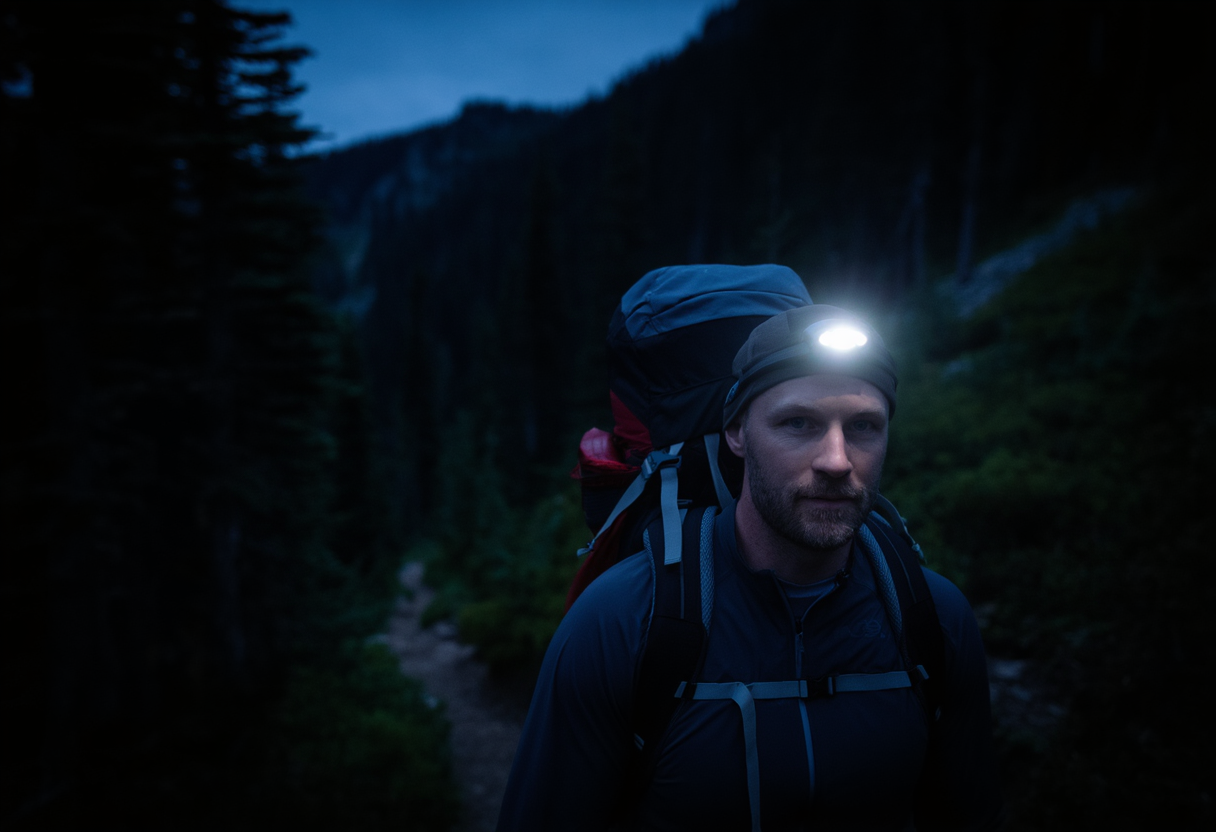Essential Tips for Using Hiking Headlamps Effectively
Using hiking headlamps effectively can significantly enhance your outdoor experience. This article unveils essential tips and techniques for maximizing brightness, ensuring comfort, and maintaining battery life while on your adventures. Learn how to wield your hiking headlamp like a pro and navigate any terrain safely.
Maximizing Brightness with Hiking Headlamps
Brightness is a critical factor when using hiking headlamps, especially in low-light environments. To maximize brightness, it's essential to understand how to adjust your headlamp to the surrounding light conditions. Many hiking headlamps come with multiple brightness settings, allowing you to customize the output based on the task at hand. For instance, while navigating through rough terrain, using a higher lumen setting can help illuminate the path ahead. Conversely, conserving battery life during periods of low activity means opting for a lower setting or using a red light mode to preserve night vision. Additionally, ensure that your headlamp lens is clean, as dirt and grime can significantly diminish light output. Regular maintenance and proper usage will enhance the effectiveness of your hiking headlamps, keeping you safe during treks.
Ensuring Comfort During Your Hiking Adventures
Comfort is vital when wearing hiking headlamps for prolonged periods. To ensure comfort, start by adjusting the headlamp straps to fit securely yet comfortably around your head. If your headlamp feels bulky or slides off, it can become a distraction while hiking. Look for headlamps with adjustable straps that distribute weight evenly, providing a secure fit without excessive pressure on the forehead. Also, consider wearing a lightweight and breathable headgear under the headlamp, which can drastically improve comfort levels. Over time, wearing a comfortable headlamp can make a significant difference in your overall hiking experience. Furthermore, when not in use, it’s advisable to take off the headlamp during breaks to prevent pressure points from forming.
Maintaining Battery Life for Hiking Headlamps
Battery management is equally essential when using hiking headlamps, especially during long expeditions. One of the best practices is to always carry extra batteries or ensure you have a means to recharge if your headlamp is rechargeable. As a general rule, try to start your hike with a fully charged or fresh set of batteries. Be mindful of battery levels and avoid using maximum brightness unless absolutely necessary. You can extend battery life by utilizing low or medium brightness settings during hikes. Additionally, consider using your hiking headlamps only for essential activities, such as navigating tricky spots, rather than continuous use. Smart management of battery consumption will ensure your hiking headlamps illuminate your adventures from start to finish.
Using Hiking Headlamps in Different Conditions
Different hiking environments present unique challenges that can affect how you use hiking headlamps. For instance, during foggy or rainy conditions, the light can reflect off particles in the air, creating a washed-out effect. In such cases, switching to a red light mode can help penetrate the haze while preserving your night vision. On the flip side, during bright, moonlit nights, you may find lower settings or even the use of a diffuse mode sufficient to navigate. Furthermore, when hiking in snow, consider the impact of light reflecting off white surfaces and adjusting your headlamp accordingly. Developing an understanding of how your hiking headlamps perform in various conditions will enhance your overall hiking experience and safety.
Learning From Others: User Experiences with Hiking Headlamps
User experiences can provide invaluable insights into effectively using hiking headlamps. Many seasoned hikers emphasize the importance of practicing with your headlamp before venturing out. Learning to adjust brightness settings and understanding its range helps in emergency situations. Some users recommend testing your headlamp in a controlled environment to observe how it performs at various distances and under different conditions. Additionally, many hikers suggest keeping an easy-to-reach flashlight as a backup in case of headlamp failure. These firsthand accounts highlight how preparation and practice can significantly impact your safety and comfort levels during outdoor adventures.
Conclusion: Harnessing the Power of Hiking Headlamps
Using hiking headlamps effectively is about blending technology with practical knowledge. By maximizing brightness, ensuring comfort, and maintaining battery life, you'll be well-prepared for any hiking scenario. Learning from other hikers' experiences can also enhance your understanding and application of your headlamp's functions. Ultimately, adopting these essential tips will help you harness the full potential of hiking headlamps, allowing you to explore the great outdoors safely.
